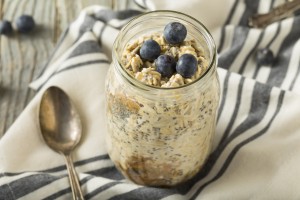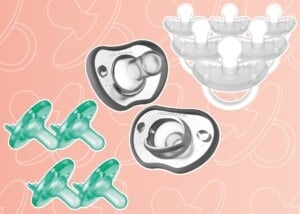Breasts and nipples come in all shapes and sizes. It’s not uncommon for us to worry during pregnancy if we think something is a bit “funky” about our nipples, breasts, or areolas that might affect feeding. I am here to reassure you that breastfeeding with inverted or flat nipples is possible!
The size of your breasts does not indicate whether or not you can make enough milk. It is also true that the shape and size of your nipples are not an indicator of whether or not your baby will be able to latch. For many babies, they’ll be able to latch on to just about any nipple regardless if they are inverted or not. However, if your baby appears to be struggling a bit because of your nipple, there are some tricks that you can try to help your baby latch on.
Breastfeeding With Flat or Inverted Nipples
You can tell that you have an inverted nipple by doing a “pinch” test. You just gently press your areola (the area around your nipple) to see if it becomes erect. If it doesn’t, then you have a “flat” nipple. If it retracts (goes back) into the areola or makes a concave shape then, it’s inverted. But if your nipple actually does poke out during the pinch test, then it’s not actually inverted.
Types of inverted nipples:
Firstly, let’s cover the different types of inverted or “flat” nipples.
Dimpled
A dimpled nipple is when your nipple is partially protruding. So it’s not completely flat or inverted, but it’s also not fully out. And when you pull it out, it does not stay out.
Unilateral
This is when one breast has an inverted or flat nipple.
Inverted
This is where it gets a little more complex in the description. You can have a “slight” inverted nipple, a “moderate” inverted nipple, or “severe” inversion. Unless your baby has issues with their suck or is premature and very sleepy or weak, most babies will have no trouble latching onto a slightly inverted nipple. If your nipple is moderately or severely inverted, then your baby might have trouble latching on.
Can I prepare my nipples for breastfeeding?
So what to do if you’re pregnant and know you have an inverted or flat nipple? Basically nothing. There is an argument among health care professionals about whether or not “preparing” inverted nipples (trying to get them to stick out) is actually needed or beneficial. Hormones help make the mother’s nipples stick out naturally during pregnancy anyway. There is no good evidence available to support the concept that women need to prepare their nipples in any way. However, it’s always good to be prepared if your baby has some trouble, so you’re ready for any challenges!
How can I help my baby latch onto my nipples?
It’s always good to be over-prepared rather than under-prepared. Here are some things you can do when your baby arrives to help if they are having trouble. No matter what you try, it’s ideal to seek help from an IBCLC, especially if you are using a nipple shield or breast shell.
- Make sure you are getting the deepest latch possible. Research shows that the “laid-back” breastfeeding position or baby-led self-attachment often leads to the best latch (Colson 2012). Get into a semi-reclined position on the couch or your bed and put your baby on your chest with their mouth near your nipple.
- Many articles and online resources suggest that women consider using a breast shell (not a shield, but a shell) before feeding to make their nipples protrude. However, research is mixed on this, and some articles show no difference between outcomes between the people who used them and those who didn’t (Hediger & Koenig 2020).
- Use a breast pump or silicone pump to help bring your nipples out a bit right before your baby feeds.
- Roll your nipple between your fingers before feeding. This can help protrude your nipple before feeding.
- Push your areola back (with your thumb on top and three fingers on the bottom). This can help protrude your nipple before baby latching.
- Use a nipple shield to help your baby latch. As an IBCLC, I would suggest someone do “all of the things” first and only use this as a last resort! This is because using a shield means you’d have to then wean your baby from the shield, so it’s best to use this after you’ve tried the other suggestions first.
Three Tips for Getting the Best Latch
Here are some really important things to remember to put yourself in the best position possible for getting the great latch:
1. Hang out skin-to-skin as much as possible 24/7.
Skin-to-skin encourages frequent breastfeeds and allows you to pick up on early feeding cues, which can really help when you’re trying to latch your baby on easily.
2. Try baby-led self-attachment.
This is where you get into a laid-back position, put your baby on your chest right at your nipple and let them self-attach. Research shows that this is a great way to start when you first try feeding your baby, and for many, it continues to be the best way to latch even as time goes on. This is because it allows your baby to hone into their own instincts while you can also help them a bit and still support them if needed.
3. Seek help as soon as possible if you’re struggling!
If you have any concerns about your baby’s latch, milk intake, or anything else, make sure to seek help from an International Board Certified Lactation Consultant (IBCLC) as soon as possible.














